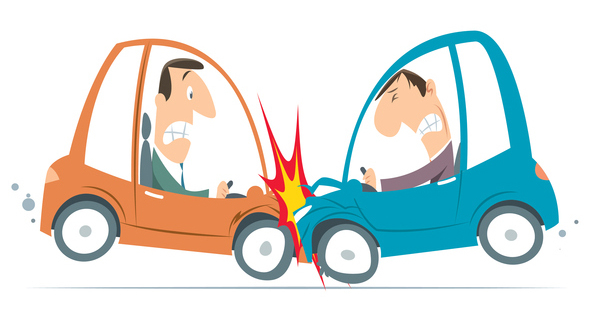You can tell you’re really deep in the claims weeds when you start thinking about subrogation. Since we are deep in the claims weeds, we have to think about it.
To put it simply, just in case you’re not deep in the claims weeds, subrogation refers to an insurance company’s seeking reimbursement for the costs of a claim from the party — or the insurance company of the party — responsible for damages that precipitated the claim. If responsibility is established and documented, subrogation can begin at any point in the process of settling a claim.
Here are some examples from a few different industries:
- Property/Casualty. A cement truck careens around a corner at 90 miles an hour, on two wheels, and t-bones the car you’re driving. By some miracle, you’re not injured. But your car has to be removed from the scene with a dust pan and a squeegee. The driver of the cement truck is determined to be at fault by virtue of the facts that (A) he was exceeding the posted speed limit by 60 miles an hour and (B) driving a cement mixer on two wheels is permissible only in movie stunts and monster-truck shows. The cement truck driver’s insurance should pay for the cost of finding and replacing your car. But that process is held up because the cement truck driver’s insurance company is also contending with the fact that the cement truck driver filed a workers comp claim, contending he had trouble controlling the vehicle because his vision was damaged from falling into the cement mixer. Under those circumstances, your insurance company would pay to find and replace your vehicle. Then it would seek reimbursement from the cement truck driver’s insurance company for the cost of your claim, including your deductible, the dustpan, and the squeegee.
- Construction. A plumber is tricked by an electrician into biting a live wire. The plumber suffers burns to his face and ends up with a terrible perm. While the perm will grow out, he files an injury claim with his company’s insurer for the burns to his face. The electrician is determined to be at fault for professional negligence and for playing a practical joke in an inappropriate setting. The plumber’s insurance company uses subrogation to seek reimbursement from the electrician’s insurance company for the plumber’s injury, for playing a practical joke in an inappropriate setting, and for shaving the plumber’s head since he opted not to let the perm grow out.
- Hospitality: The chef in a restaurant bets a waiter he can’t jump over a patron’s table without disturbing anything. The waiter takes him up on it. Since the waiter had pounded 12 shots of Jose Cuervo at the restaurant’s bar before his shift, he miscalculates his take off, fails to get the necessary speed and elevation, and plants his lead landing foot in the patron’s clam chowder. The patron suffers burns from the hot chowder and files a liability claim against the restaurant. He then goes to the emergency room (ER) to be treated for his burns. His ER visit is covered by his medical insurance. Since the waiter was determined to be at fault for improper execution and being over the legal blood-alcohol limit, the restaurant’s liability insurance is responsible for paying the patron’s liability claim and for comping him another bowl of chowder. And since the patron filed a liability claim against the restaurant, his medical insurer subrogates the cost of the ER visit to the restaurant’s insurer.
Cloud Claims Makes Claim Management Simple
Chances are your claims won’t be anywhere near as complicated — or absurd — as the ones above. Nevertheless, we built subrogation capabilities into Cloud Claims to make sure you’d be able to cut through the weeds and handle anything that comes your way.
You and your claimants will be happy we did.







